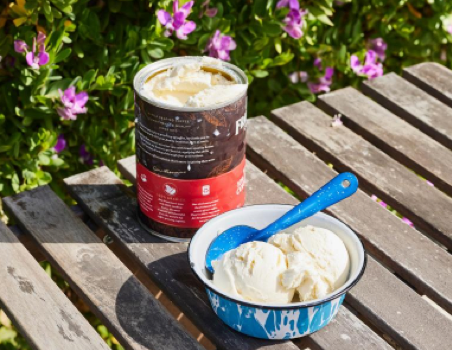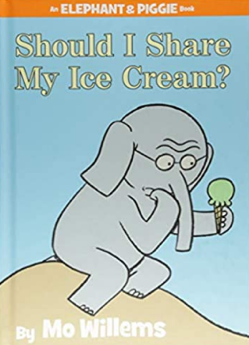Activities and Resources to Celebrate National Ice Cream Month with Students

Image: https://www.foodnetwork.com/recipes/food-network-kitchen/coffee-can-ice-cream-12347977
I have fond memories of making homemade ice cream in elementary school. My classmates and I sat on the floor in the hallway, rolling coffee cans filled with milk, ice, sugar, vanilla extract, and salt back and forth until the mixture turned into delicious, creamy ice cream. I remember my teacher briefly explaining the science behind the combination of ice and salt to create the perfect ice cream-making conditions. What a fun, tasty, and educational experience!
July is National Ice Cream Month - we’ve compiled several activities and resources to help you and your students celebrate.
Share these cool facts with students
- The first advertisement for ice cream in America appeared in the New York Gazette in 1777.
- In 1904, the ice cream cone was invented as a way for people to eat ice cream easily while enjoying the World’s Fair in St. Louis, Missouri.
- In 1984, President Ronald Reagan designated July as National Ice Cream Month.
- There are 46 dairy plants that produce ice cream in Wisconsin. (Lucky for me, I happen to live in Wisconsin.)
- It takes about 3 gallons of whole milk to make one gallon of ice cream.
- New Zealanders consume more ice cream per capita than any other country.
- Vanilla is the most popular ice cream flavor in the United States, Germany, Italy, New Zealand, China, and Brazil.

Teach a lesson focused on ice cream and dairy.
- Dairy math, picture book lessons, a virtual farm tour, and adopt a cow program - Dairy Farmers of Wisconsin offers engaging lesson plans for students in kindergarten through high school.
- Use this simple recipe to make coffee can ice cream (or you can use a plastic bag to get the same result) with students of all ages.
- Discover the science behind ice cream with this ready-to-go lesson plan from students in grades 9-12 – “Milk: The Scoop on Chemical and Physical Changes”.
- Preschool Plan It offers a wealth of resources, including lesson plans, activities, and learning center ideas focused on ice cream.

Image: https://www.amazon.com/Should-Share-Cream-Elephant-Piggie/dp/1423143434
Check out these ice cream-themed picture book titles.
- Curious about Ice Cream (Smithsonian) by Bonnie Bader
- Should I Share My Ice Cream (An Elephant and Piggy Book) by Mo Willems
- Ice Cream Face by Heidi Woodward Sheffield
- Ice Cream Summer by Peter Sis
- I Campaigned for Ice Cream: A Boy’s Quest for Ice Cream Trucks by Suzanne Jacobs Lipshaw
Host an ice cream social.
There are a variety of ways to host an ice cream social with students and families. I taught at an elementary school that serves a large number of students of diverse cultures and backgrounds who lived in a trailer park community. Many of the families struggled with attending school events due to a lack of reliable transportation, work schedules, etc.
At the end of every summer, we partnered with the middle school and several community organizations to host a back-to-school ice cream social held at the trailer park’s community center. Along with the ice cream, we provided free school supplies, backpacks, and a plethora of information about programs and services, and resources available that many of the families could benefit from. Most of the teachers attended (along with more and more families every year), giving students the opportunity to meet their teachers before the first day of school.
The event was always a big hit and enabled us to reach many families all at once while bridging the gap between school, families, and the community. Thinking back, I wish we would've held more activities and celebrations there throughout the year.
How will you and your students celebrate National Ice Cream Month? Please share your delicious ideas!
Sources
https://www.wisconsindairy.org/national-ice-cream-month/Wisconsin-Ice-Cream
https://www.benjerry.com/whats-new/2017/09/ice-cream-useless-facts